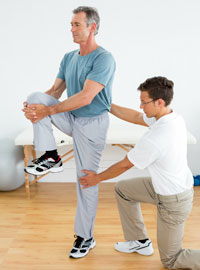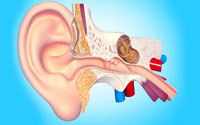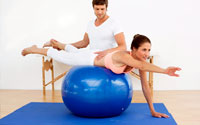Vestibular & Vertigo Therapy

Vertigo is the sensation of spinning, even if you are still. Alternatively, you may experience the sensation of the environment moving which is called oscillopsia.
These kinds of problems can occur with vestibular disorders and can be severe and debilitating. Our Vestibular system helps us to maintain balance and equilibrium. When disorders of the vestibular system occur, organs of the inner ear are disrupted and we experience vertigo (often referred to as dizziness) and balance problems.
Many vestibular disorders can be effectively treated with physical therapy. The most common vestibular disorders treated by physical therapy are BPPV (Benign Paroxysmal Position Vertigo), which is a disorder of the inner ear canals, and Hypo-functioning, (under functioning) of one side of the vestibular system which can result after an infection or virus of the inner ear.
Hypo-functioning of the vestibular system often occurs with a virus or infection of the inner ear such as Labyrinthitis or Vestibular Neuritis. Physical therapy is highly effective in addressing each of these problems as well as many others listed below.
In many cases the brain is able to recover from vestibular damage without treatment through a process known as vestibular compensation. When vestibular compensation does not occur, a person may become overly dependent on eyes, muscles, and joints to maintain posture and balance. In these cases a qualified physical therapist can help retrain the brain to recognize and process signals from the vestibular system in coordination with other systems in the body that regulate balance.
Type of Treament
The kind of physical therapy used for vertigo will vary depending on the cause.
For problems associated with Laybrinthitis or Neuritis the brain can effectively be retrained to compensate for the vestibular loss using “gaze stability” or eye exercises.
If the canals are the problem as in BPPV, positional treatment in which the patient is placed in a series of positions in order to clear and restore function of the inner ear canals is used.
Sometimes “habituation exercises” are used in which the patient performs the provocative movements under a controlled setting in order to gradually decrease the symptoms.
Regardless of the cause of dizziness, balance training is frequently a part of vestibular therapy.
Treatable Conditions
- BPPV
- Labyrinthitis
- Vestibular Neuritis
- Dizziness and loss of balance from Concussions
- Sub Acute Meniere's Disease
- Migraneous Vertigo
- Balance/Gait Disorders






